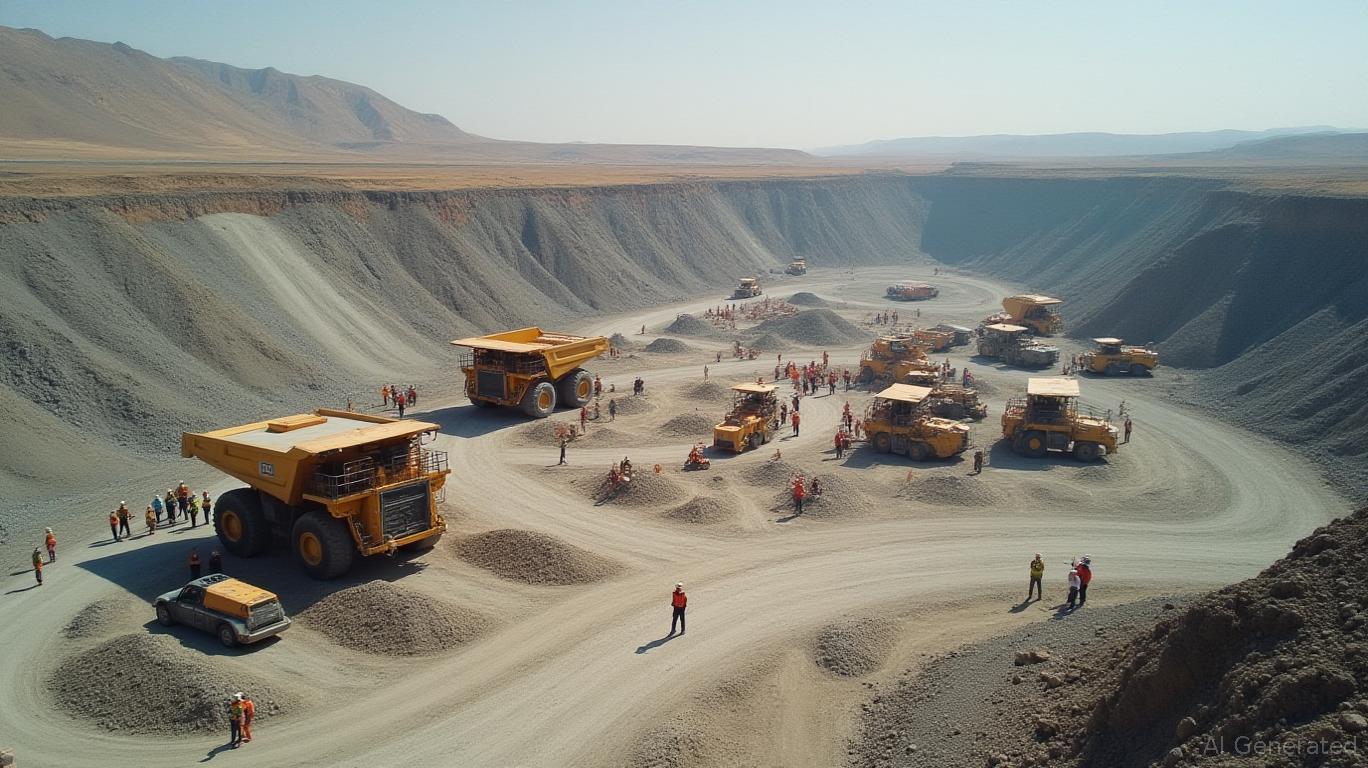Oyu Tolgoi's Pivot: How Rio Tinto Is Navigating Delays to Secure Copper's Future
The Oyu Tolgoi copper-gold project in Mongolia, one of the world's largest undeveloped mines, has long been a linchpin of Rio Tinto's (ASX: RIO, LON: RIO) growth strategy. But as delays in resolving licensing disputes with Entrée Resources threaten progress in its critical Panel 1 development,
has demonstrated a masterclass in operational flexibility. By shifting focus to Panel 2 South, the company is not only preserving its 2025–2036 production targets but also positioning Oyu Tolgoi as a cornerstone of copper's rising demand in the coming decade.The Strategic Shift: Panel Optionality as Risk Mitigation
The Oyu Tolgoi LLC board's approval of an alternative mine plan in June 2025 marks a pivotal move to address delays in transferring licenses for the Entrée joint venture area. While development in Panel 1—entrusted to Entrée—is paused until the Mongolian government finalizes tax assessments and regulatory approvals, Rio Tinto has redeployed resources to accelerate work in Panel 2 South. This strategic pivot underscores the project's inherent flexibility: its multi-panel design allows the company to prioritize pathways that avoid bottlenecks while maintaining production timelines.

The pause in Panel 1 is not without cost. Entrée Resources has warned of economic impacts, citing halted underground development in Panel 1—where 48 meters of lateral progress had been made by late 2024. However, Rio Tinto's focus on Panel 2 South, which lies outside the disputed joint venture area, has insulated the project's near-term goals. “This isn't a setback—it's a reroute,” says Katie Jackson, Rio's Copper Chief Executive. “We're buying time while maintaining momentum.”
Resilience in Production Targets
Crucially, the shift has left Rio Tinto's 2025 copper production guidance intact. The company remains on track to produce between 780–850 kilotonnes (kt) of copper this year, with Panel 0 already in production and Panel 2 slated to begin output in 2026. Long-term targets—500,000 tonnes per annum (ktpa) from 2028 to 2036—remain unchanged, as the project's massive ore body (estimated at 54 million tonnes of copper) provides ample runway.
The flexibility to choose between Panel 1 and Panel 2 South as the next phase of development is a key differentiator. Should license transfers resolve swiftly, Panel 1 could still be prioritized, but the current focus on Panel 2 South ensures continuity. This dual-path strategy exemplifies how Rio Tinto is leveraging its technical expertise to navigate geopolitical and regulatory risks without compromising growth.
Why Investors Should Take Note
The Oyu Tolgoi project's resilience is a microcosm of Rio Tinto's broader strengths as a copper producer. With global copper demand projected to triple by 2050—driven by electric vehicles, renewable energy infrastructure, and grid modernization—the world's need for low-cost, high-quality supply has never been greater. Oyu Tolgoi, with its estimated $6 billion in annual revenue at current copper prices, is a cash engine for Rio Tinto, even as it accounts for just 15% of the company's total copper production.
Investors should also recognize the upside potential of accelerated Panel 2 South development. While the current plan delays Panel 1's contribution, Panel 2 South's faster path to production could lead to earlier-than-expected increases in output. Rio Tinto's emphasis on maintaining its 500ktpa long-term average suggests that even if Panel 1's delays persist, the project's overall value remains intact.
Risks and Considerations
The primary risk remains the unresolved tax dispute in Mongolia. The Mongolian tax authority's delay in finalizing assessments on the Shivee Tolgoi and Javkhlant licenses has created uncertainty for Entrée's financial health, which in turn could complicate future collaboration. However, Rio Tinto's financial strength and its 66% stake in Oyu Tolgoi LLC provide a buffer, as the government's 34% stake ensures alignment on long-term goals.
Another factor is the broader copper market. While demand is robust, oversupply concerns in the short term—due to projects like Glencore's Mipas in the DRC—could temporarily pressure prices. Yet Oyu Tolgoi's low operating costs ($0.90 per pound of copper, among the industry's lowest) make it resilient to price fluctuations.
Investment Thesis: A Buy on Long-Term Value
For investors focused on the next decade, Oyu Tolgoi's strategic shift reinforces its status as a top-tier copper asset. The project's optionality, low costs, and alignment with global decarbonization trends make it a compelling bet. While near-term headline risks (e.g., Mongolian tax disputes) may weigh on sentiment, the structural tailwinds for copper and Rio Tinto's execution capability suggest the stock is undervalued relative to its long-term potential.
Rio Tinto's shares, trading at roughly 12x forward EV/EBITDA, offer a margin of safety while positioning investors to benefit from copper's secular boom. For those with a multi-year horizon, Oyu Tolgoi's ability to adapt and deliver makes it a cornerstone of any diversified commodities portfolio.
In the words of Rio's leadership: “Flexibility is the new stability.” At Oyu Tolgoi, that mantra is proving its worth.

Comments
No comments yet